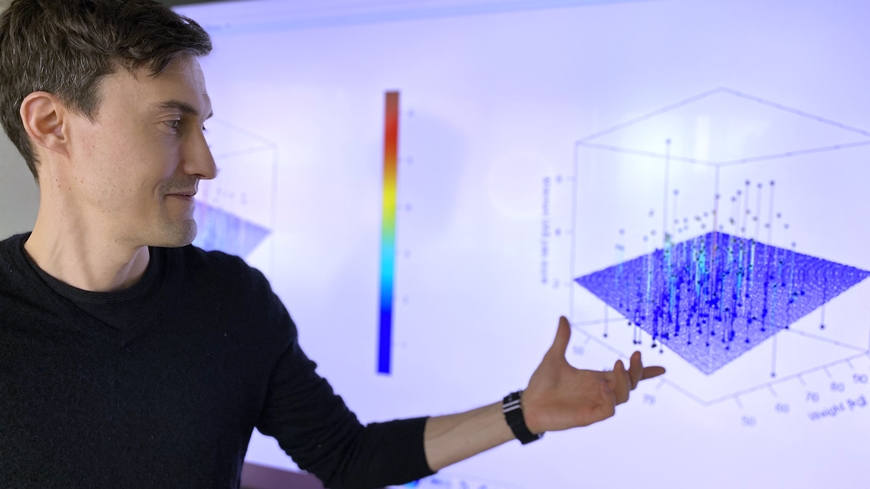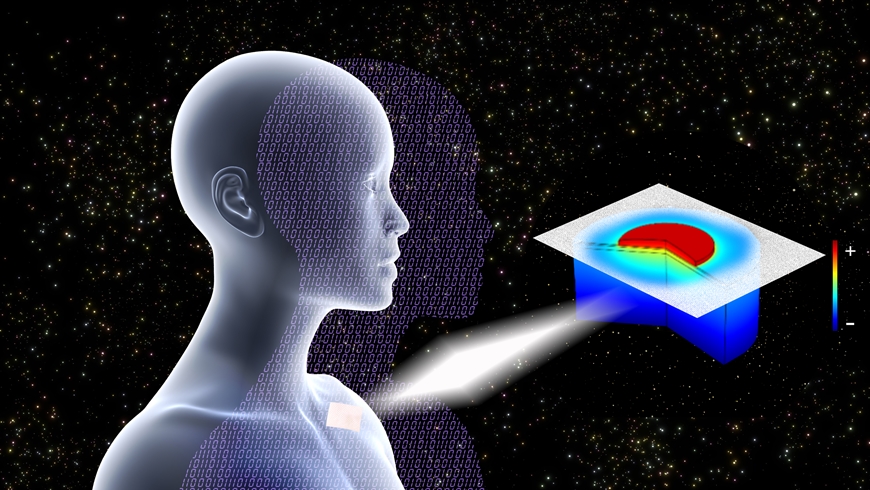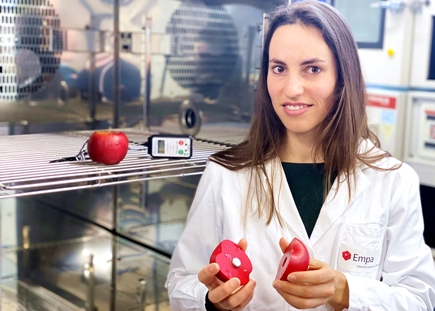Personalized medicine
The simulated patient
Digital twins enable customized medical therapies. Empa researchers have now modeled several hundred such avatars based on real people and treated them experimentally. For the first time, the digital twins received feedback from real patients.

The enormous advances in modern medicine allow us to provide patients with an improved quality of life even during severe illnesses. Synthetic opiates, for example, can be used to control severe pain caused by cancer. However, the exact dosage is still a challenge. Painkillers, such as fentanyl, must be administered precisely to be effective without harming patients with sometimes life-threatening side effects. Currently, such painkillers are administered through the skin by means of a drug patch, among other methods – a gentle method that helps enable patients to return to their daily lives. However, the appropriate dosage can only be determined by trial-and-error. Reactions to an under- or overdose are only seen in retrospect, when the medication has long since left the drug patch.
This is now set to change: To ensure that the correct drug dosage can be determined and kept constant for each individual patient in the sense of personalized medicine, Empa researchers, together with a team from the University of Bern, are using computer and data sciences. The team led by Thijs Defraeye from Empa's "Biomimetic Membranes and Textiles" lab in St. Gallen is using multiphysics modeling to develop a digital twin of the human body that allows to control and predict the course of therapy.
Already 100s of avatars treated

In the mathematical models, on which the complex digital twin is based, the researchers have taken into account a variety of variables from real people, such as age and lifestyle. This is because the effect of a drug is influenced by a plethora of physical parameters that can vary greatly from person to person. "When creating an avatar, we take into account, for example, how the drug is metabolized in the body during treatment and how much ultimately gets to the pain center in the person's brain," explains Empa researcher Defraeye.
To ensure that the dosage is not only safe but also effective, the in silico twin can also receive physiological and psychological feedback from real patients. For example, humans provide information on whether and to what extent they continue to perceive pain. Of particular interest here is the length of pain-free periods. And since not every day is a good day, and life is full of unpredictable events, the effective pain perception of those affected also varies much more than a doctor's visit every other week could address. "With this feedback from humans, the avatar can dynamically adjust the therapy and even predict the course," explains Empa researcher Flora Bahrami. In future, sensors will also measure other physiological parameters such as heartbeat or respiration rate in real time and report back to the avatar.
Thus far, several hundred personalized avatars have been created and individual therapies been tested virtually in cooperation with the Cantonal Hospital of St. Gallen. "We have already been able to show that the optimal treatment regime for women and men, as well as for younger and older people, differ significantly," Bahrami says.
Pain therapy using transdermal patches is just the beginning of avatar-assisted treatment, though. In collaboration with clinics and hospitals, Empa researchers have already turned their attention to other therapies such as insulin administration for diabetes using digital twins.
Digitalization against food waste

Digitization can enable major advances not only in medicine, but also in other areas – such as food technology. Just recently, the Empa team led by Thijs Defraeye was awarded a prize in data.org's Inclusive Growth and Recovery Challenge. The highly endowed award is sponsored by the Rockefeller Foundation and the Mastercard Center for Inclusive Growth. The goal of the joint project with the BASE Foundation (Basel Agency for Sustainable Energy) is to use computer models and mobile apps to promote sustainable agriculture and improve the ecological and economic situation for small farms in developing countries. Data processing and the modeling of parameters from agriculture, technology and current economic conditions are key to enable small farms to manage their products with foresight in real time. This is because currently, up to 60% of such farms' harvests have to be disposed of in developing countries, as fruits and vegetables spoil before they reach the market due to lack of access to cold chains.
The researchers want to counter this immense food waste. "At the end of this technology development, there should be an app for cell phones that supports the sustainable use of resources during storage, refrigeration and sale of the goods," says Empa researcher Seraina Schudel. The large-scale project also provides Empa researchers with an excellent basis for further developing the field of computer and data sciences, and digital twins in particular, for numerous applications.

| Audio |

In the podcast, the possibilities of pain therapy with the support of a patient's digital twin are explained in more detail. Radio programme on SRF, Wissenschaftsmagazin of June 6 2021 (in German)
-
Share






